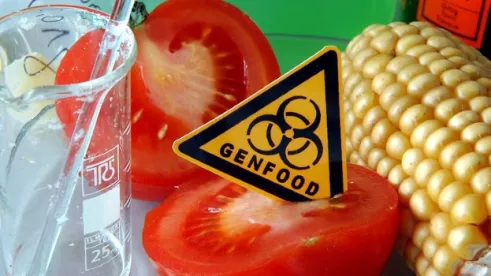On July 29, 2016, President Obama signed into law legislation that creates a nationwide mandatory labeling regime for genetically modified organisms (GMO) in foods. The law directs the Agriculture Department (USDA) to establish, within two years, a national process to identify GMO food products or ingredients that should be disclosed.
The president’s signature came 15 days after the House gave final approval to a Senate bill (S. 764) that preempts existing state and local GMO labeling laws and bars similar laws in the future. Vermont, which put its GMO labeling law into effect on July 1, is most immediately affected. Laws on the books but not in effect in Alaska, Connecticut, and Maine also are now moot.
The GMO labeling legislation signed into law by the president defines GMO food as that which contains genetic material "that has been modified through in vitro recombinant deoxyribonucleic acid techniques; and for which the modification could not otherwise be obtained through conventional breeding or found in nature."
The federal law establishes various mechanisms by which food manufacturers can comply with the requirement to inform consumers of the presence of GMOs in foods.
Manufacturers may choose to disclose GMO presence in food by:
-
Text on a package;
-
A USDA-created symbol; or by
-
Bar codes or other digital means that consumers can scan with smart phones.
Small food manufacturers, which have yet to be defined, would also be able to direct consumers to websites or telephone numbers for information. The law requires a study of the technological challenges to consumers’ ability to access digital GMO disclosures such as the availability of wireless cellular networks and landline telephones, as well as challenges faced by rural retailers and the potential benefits of installing digital scanners in stores to provide GMO information.
Foods where meat, poultry, and egg products are the main ingredient are exempted. Also, the law prohibits the Secretary of Agriculture from considering any food primarily derived from an animal to be bioengineered solely because “the animal consumed feed produced from, containing, or consisting of a bioengineered substance.”
Also, under the federal law, USDA certified organic products qualify for non-GMO claims in the marketplace. And, the law specifically excludes from federal preemption “any remedy created by a State or Federal statutory or common law right.”
Over the next two years, USDA will be the focus of attention as it writes rules to implement the nationwide GMO labeling requirement. Many groups that were influential in shaping the law signed by President Obama such as the Grocery Manufacturers Association and the Environmental Working Group will be engaged in efforts to influence USDA’s decisions including what the symbol on the package denoting GMO ingredients should look like, the amount of genetically engineered contents a product must contain to trigger the labeling requirement, and other related regulatory issues.
Critics and opponents of the new federal GMO law say they will try to address shortcomings in the legislation during USDA’s rule-making process. For example, they note the law does not give USDA enforcement authority for companies that knowingly fail to identify GMO products. Also, USDA does not have the authority to recall a product for failing to include a bioengineered disclosure. Thus, the rule-making process could be lengthy and contentious.





 />i
/>i

